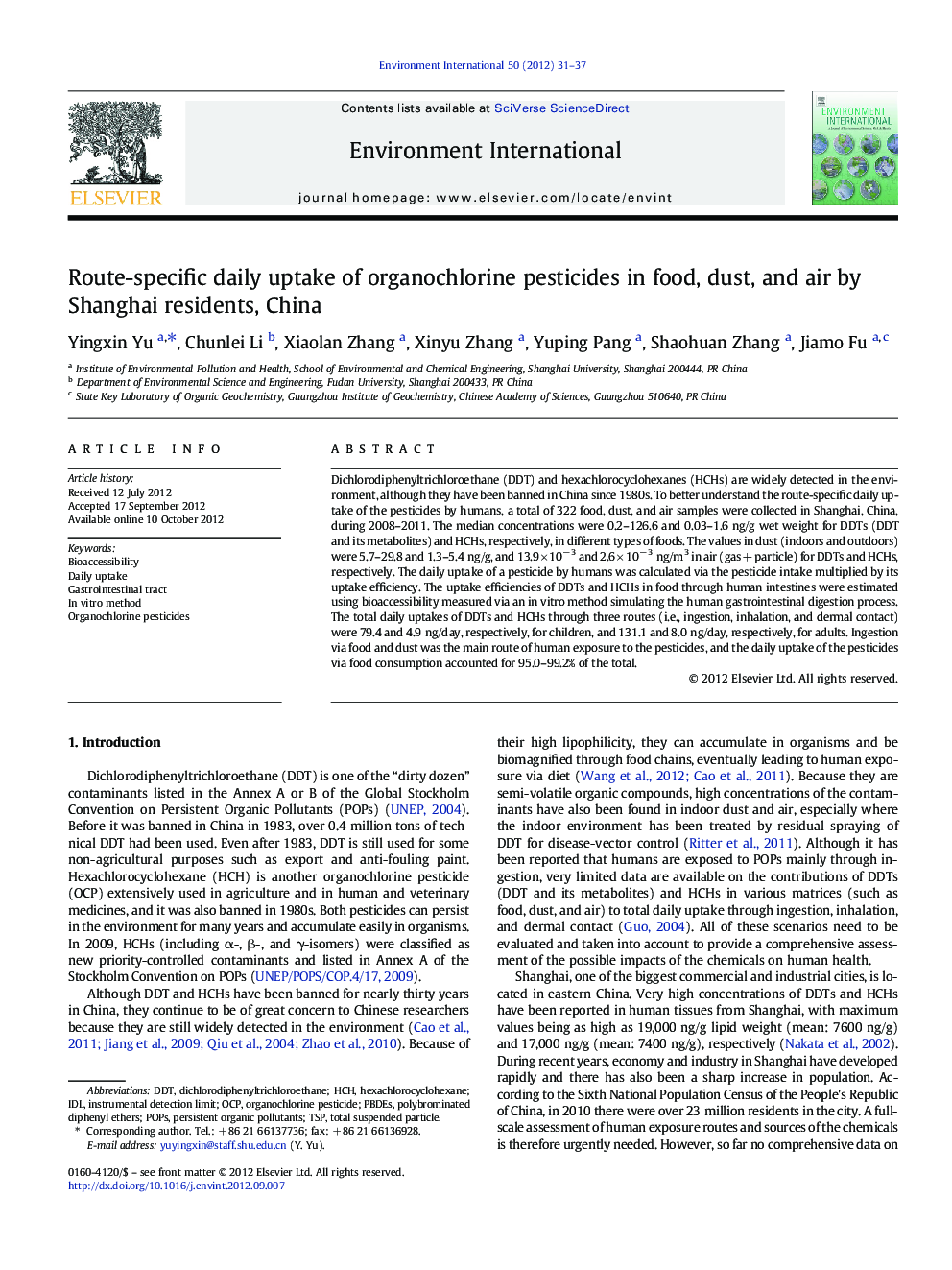| Article ID | Journal | Published Year | Pages | File Type |
|---|---|---|---|---|
| 4422908 | Environment International | 2012 | 7 Pages |
Dichlorodiphenyltrichloroethane (DDT) and hexachlorocyclohexanes (HCHs) are widely detected in the environment, although they have been banned in China since 1980s. To better understand the route-specific daily uptake of the pesticides by humans, a total of 322 food, dust, and air samples were collected in Shanghai, China, during 2008–2011. The median concentrations were 0.2–126.6 and 0.03–1.6 ng/g wet weight for DDTs (DDT and its metabolites) and HCHs, respectively, in different types of foods. The values in dust (indoors and outdoors) were 5.7–29.8 and 1.3–5.4 ng/g, and 13.9 × 10− 3 and 2.6 × 10− 3 ng/m3 in air (gas + particle) for DDTs and HCHs, respectively. The daily uptake of a pesticide by humans was calculated via the pesticide intake multiplied by its uptake efficiency. The uptake efficiencies of DDTs and HCHs in food through human intestines were estimated using bioaccessibility measured via an in vitro method simulating the human gastrointestinal digestion process. The total daily uptakes of DDTs and HCHs through three routes (i.e., ingestion, inhalation, and dermal contact) were 79.4 and 4.9 ng/day, respectively, for children, and 131.1 and 8.0 ng/day, respectively, for adults. Ingestion via food and dust was the main route of human exposure to the pesticides, and the daily uptake of the pesticides via food consumption accounted for 95.0–99.2% of the total.
► Levels of DDTs and HCHs in food, dust and air samples from Shanghai, China ► Bioaccessibility of DDTs and HCHs in food was measured using an in vitro test. ► Daily uptake of DDTs and HCHs via ingestion, inhalation, and dermal contacts ► Ingestion via food and dust was the main route of human exposure to DDTs and HCHs. ► DDTs/HCHs from food consumption accounted for 95.0–99.2% of the total daily uptake.
